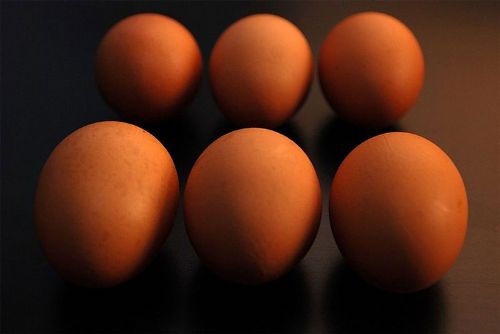
Demand for free range eggs has driven a huge increase in egg consumption in Australia over the last 12 months.
Whilst figures held by the British Egg Industry Council show that egg consumption in this country increased by just one per cent in 2011, consumption in Australia increased by seven per cent. Retail sales of free range eggs increased by nearly 25 per cent.
Egg industry leaders in Australia suspect that the large surge in demand for eggs may have been helped by scientific research, which has finally broken any link between the consumption of eggs and potential heart problems.
"We believe the increased consumption is due to a growing awareness of new science that proves that eggs do not increase cholesterol as previously thought and that people can safely eat six eggs a week (according to the Heart Foundation)," said James Kellaway, managing director of Australian Egg Corporation Ltd (AECL). "Not only that, new science shows that egg consumption can help people with diabetes and assist reduce obesity in the community."
Statistics released by AECL show that the Australian egg industry produced a total of 392 million dozen eggs during 2011 - the equivalent of 12.9 million eggs each day. This represents an increase of ten per cent on 2010 levels and a rise of 22 per cent on the five-year average. The figure has increased by 51 per cent since the year 2000.
James Kellaway said that during 2011 each Australian ate on average 213 eggs - up from the 198 eggs consumed in 2010. Latest BEIC figures for the United Kingdom put per capita egg consumption at 185. A total of 9,691 million eggs were produced in the UK in 2011. Consumers ate a total of 11,512 million during the year - the equivalent of 32 million eggs each day.
Worldwide egg consumption was up to 1,195 billion eggs in 2011 from 963 billion eggs in the year 2000. Per capita consumption in 2011 was 173 eggs compared with 157 eggs in the year 2000. However, per capita egg consumption is declining in the United States. According to the United States Department of Agriculture, the estimated figure for 2011 was 246.3 - down from 247.4 the previous year. In the year 2000 per capita egg consumption in the United States was 251.7.
The falling per capita figures in America are in sharp contract to the huge increases in Australia, where AECL says eggs are an increasingly important part of the diet. "These statistics prove that the humble egg has become a central part of the diet of Australians – be it breakfast, lunch or dinner, eggs are a versatile, nutritious and very affordable food that Australians are eating... with great gusto!" said James Kellaway.
In terms of retail sales, a total of 128.4 million dozen (worth $523.5 million) were sold in Australia in 2011, which was an increase of five per cent on the volumes sold in 2010 and an increase of 19 per cent on the five-year average. James Kellaway said that long term annual growth was averaging five per cent each year. This compared with population growth in Australia that averaged 1.5 per cent each year.
Despite the increases, James Kellaway said there were still other countries where consumption was much higher that in Australia. "While Australians have increased their egg consumption in the past two years, Mexicans and Japanese eat considerably more eggs than us. According to the International Egg Commission, Mexicans ate a whopping 365 eggs while Japanese people ate 324 eggs in the past year," he said.
Free range has clearly been the driver of the increases seen in Australia.
Statistics broken down by production system show that cage egg retail sales amounted to 71 million dozen in 2011 - a decrease of one per cent on 2010 levels, although the figure was up by two per cent on the five-year average. Free range retail egg sales reached 43 million during the year, which was a massive increase of 24 per cent on 2010 levels and up by 64 per cent on the five-year average. Barn retail egg sales fell to a total of 11 million dozen, which was down by three per cent, although this was a 64 per cent increase on the five-year average. James Kellaway suggested that low prices were partly responsible for the huge growth in demand for free range.
"The increase in free range retail sales was driven, in part, by the lowest free range retail prices since 2006. In terms of market shares in 2011, cage eggs owned 55 per cent of the retail market with free range eggs representing 34 per cent. Barn-laid eggs remained subdued at nine per cent of the retail market, with organic and other specialty eggs representing two per cent of the market," he said.
In the United Kingdom free range accounted for 47 per cent of the total market in 2011, including three per cent organic. This compares with 27 per cent in 2004, 30 per cent in 2005, 32 per cent in 2006, 34 per cent in 2007 and 38 per cent in 2008. Cage eggs accounted for 49 per cent of the total market in 2011, with barn eggs filling the remaining four per cent of the market.
